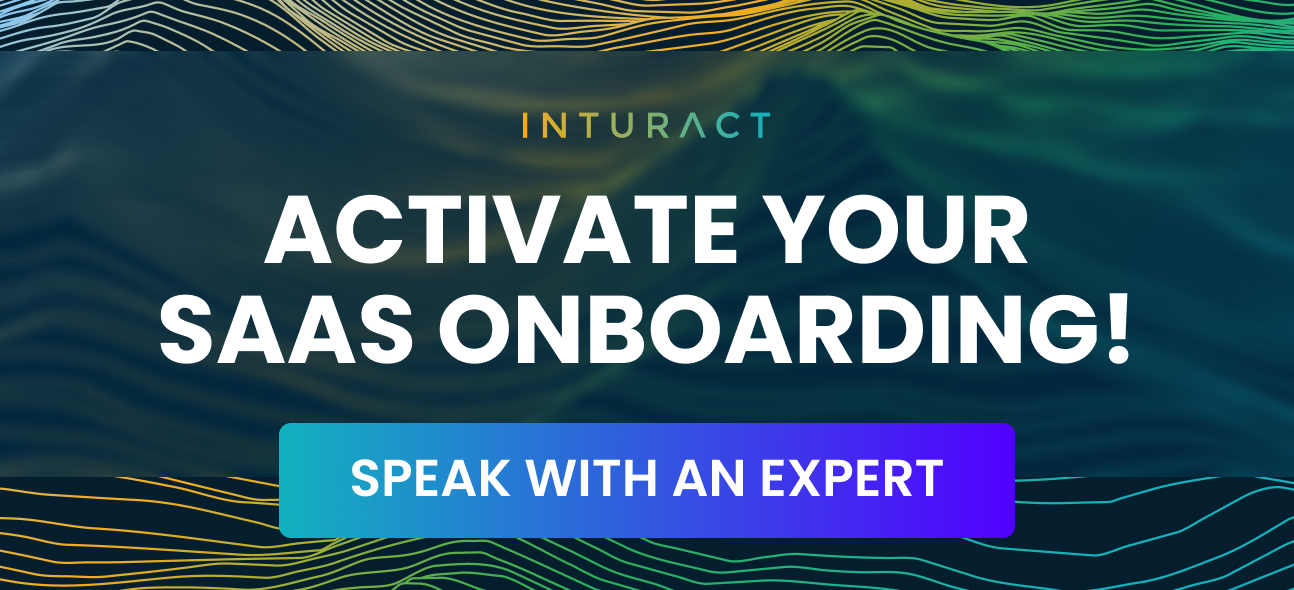User onboarding is a crucial yet often overlooked step in the user journey.
Most customers churn because they don’t fully understand the product. As per statistics, 80% of customers deleted an app because they didn’t understand how to use it. Also, 86% of users claimed that they are more likely to stay devoted to a brand/company that invests in onboarding content that inspires and educates them after the purchase.
The user onboarding process is the foremost experience new users have of your product. Therefore, having a well-designed onboarding process is indispensable, especially for B2B companies.
Getting the user onboarding right can create a positive user experience, reduce friction and confusion, increase user engagement and productivity, and gain your company a unique competitive advantage.
Thankfully, designing a streamlined user onboarding experience isn’t all that challenging. In this article, we will discuss user onboarding, explain why user onboarding matters, and cover the best strategies and practices for ensuring a well-defined onboarding process.
Understanding User Onboarding
User onboarding is the process of guiding new users to fully comprehend and derive value from your product or service.
Often, user onboarding combines guided tutorials with valuable support resources and guidance to help the new users understand the product’s functionality.
The process of user onboarding begins the moment a prospect signs up for your product. The entire experience is designed to boost user engagement and help them successfully meet their goals.
Let’s look at an example:
Most SaaS products can be tricky to understand, especially in the first go. Imagine if you are trying a new SaaS product, how would you know where to begin? And most users faced this same issue with Asana, a SaaS-based project management tool.
To streamline the process of user onboarding, Asana offers self-serve guides that address all user’s queries. The company offers ‘The Asana Guide’ which is a centralized content hub of the best practices that enable teams to easily get started with the tool.
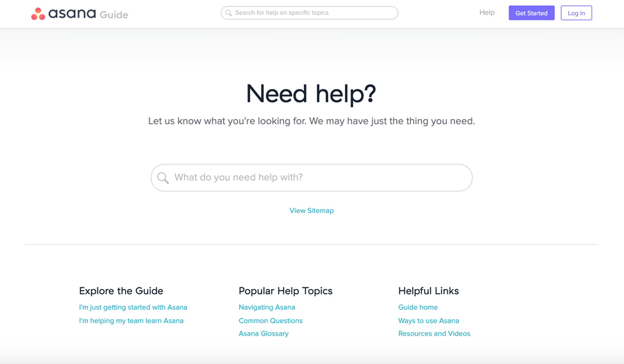
Image: Source
Asana has a dedicated Search page that enables new users to quickly identify themselves as ”helping my team learn Asana” or “just getting started with Asana.” Based on the choice, the new users can check out a wide range of educational content in the form of templates, checklists, webinar links, and instruction manuals.
Additionally, there are live Q&A’s with experts and several self-paced online courses that remove the fear from this tool implementation.
At the end of this user onboarding process, users are:
- Familiar with the product’s value
- Equipped with the knowledge and confidence to successfully use the product on their own.
The Role of Empathy in User Onboarding
Empathy plays a crucial role in user onboarding. When users feel understood and supported during onboarding, they are more likely to continue using the product or service and become loyal customers.
Empathy allows you to put yourself in the shoes of the user and understand their needs and pain points. This allows you to create an onboarding process that aligns with their needs and expectations.
By empathizing with the user, you can identify any pain points they may be experiencing during onboarding and take steps to address them. This can include providing clear instructions, simplifying the process, or offering additional support. Thus, you can create a more personalized onboarding experience that addresses their specific concerns and helps them get started with the product or service more quickly and easily.
One brilliant example of this is demonstrated by Airbnb. The company understands that new users have tens of questions, concerns, and uncertainties about the process of booking a stay or becoming a host. Thus, the company has created an empathetic user onboarding process with clear instructions and personalized guidance to help new users easily navigate through each stage.
They have also prioritized a user-friendly and intuitive interface that simplifies complex tasks. Lastly, recognizing that users might have unique concerns, Airbnb has provided several educational resources and tips to address common user queries.
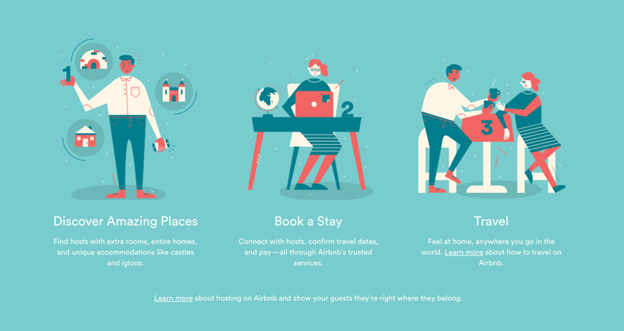
Image: Source
By implementing these simple strategies, Airbnb has displayed empathy towards users’ needs, resulting in increased trust, loyalty, and engagement.
Key Elements of User Onboarding
An efficient user onboarding process is a combination of a few elements that help the users to effectively understand and engage with your product and increase user engagement.
Onboarding elements guide the new users through the onboarding process and can be used independently or together to meet the specific needs of the users.
Below, we will discuss all the vital key elements that you can include in your user onboarding flow:
Onboarding emails
Onboarding emails are the first personal interaction between you and the new user. They are meant to welcome the user and guide them through the process of onboarding. As a good practice, try to keep the emails clear, concise, definitive, and friendly.
Below is an excellent example of an onboarding email by Crello, a graphic design tool that lets you build your own designs and animations from scratch. The email instantly grabs the user’s attention, thanks to the use of vibrant colors and characters. It also includes a 79-second-long video that demonstrates how to create designs easily.
Image: Source
In-product guided tours
These are the step-by-step guides that help your users to learn about your product and its functionality. These videos must include fun and interactive visuals that engage the users and help them understand every feature easily and effectively.
Dropbox, for instance, does an excellent job of explaining itself to new users with its product tour. It offers step-by-step guidance, acquainting users with each and every function in a clear and succinct manner, without overwhelming them with unnecessary information.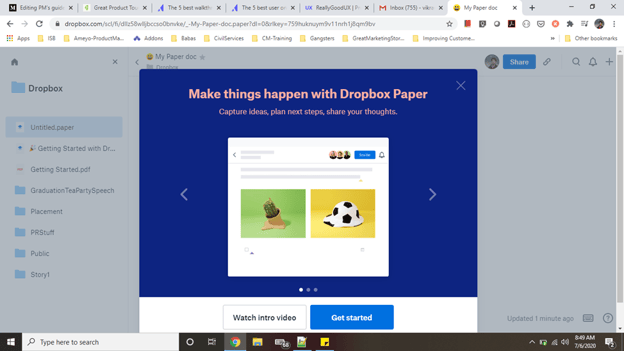
Image: Source
Tooltips, banners, and callouts
This is a crucial onboarding element that helps to point out key features and functionalities throughout your guided tour. They appear as small in-app messages that are excellent for contextual product tutorials, self-service walkthroughs, and new feature announcements.
One great example of this is showcased by Ahrefs, a prominant tool in the world of SEO. The tool provides helpful tooltips such as the one in the image below to educate users about the technical potential of their platform.

Image: Source
Checklists and progress bars
Checklists are simple yet highly effective tools for user onboarding and engagement. In fact, these checklists are technically proven to increase activation and retention. Additionally, progress bars help to keep the new users on track by showing them where they are in the onboarding process.
Tandem, a language exchange app does a great job with user onboarding checklists. It uses a progress bar to alert the new users regarding unfinished tasks. Once a user taps on it, a full onboarding checklist appears that effectively reminds the users about something incomplete without disturbing their in-app experience.
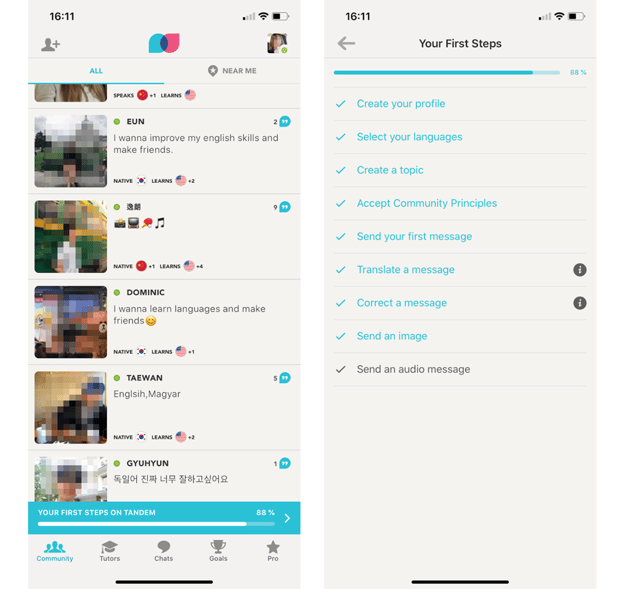
Image: Source
• User manuals and self-service resources
These user manuals are comprehensive resources that create a rich knowledge base or help center for new users. They cover a wide range of the most common issues and queries that users can refer to. The purpose of these manuals is to familiarize the users with the product.
How to Get Your Onboarding Flow Back on Track
Now let’s say you have a user onboarding workflow in place for your SaaS product. However, it is not bringing in the desired results. The adoption rates are too low and the churn is very high. Well, chances are there are some serious issues with your user onboarding process.
Here are some best practices that you can follow to get your onboarding flow back on track and increase user engagement.
1. Start by understanding your users
You must know your user persona thoroughly, which in turn, will enable you to learn more about your customers. Knowing your customers will let you understand their pain points and challenges, and ultimately, tailor the onboarding process.
2. Keep the sign-up flow as short and simple as possible
The sign-up process is often the first interaction of the user with your product. Thus, it is important to ensure that users have no issue getting past this stage.
You can simplify the sign-up flow by asking users to provide minimum information only. This will encourage them to complete the sign-up process.
Below is a brilliant example of a simple sign-up form offered by Hipmunk. The company focuses on keeping things quick and easy by requesting for only 3 input fields. Additionally, it allows for One-click sign-up using either Google or Facebook accounts.
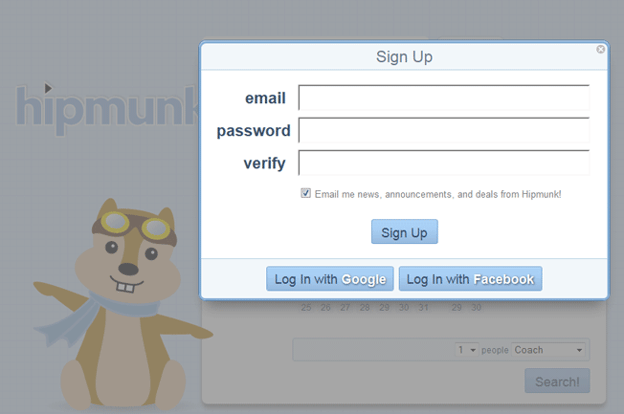
Image: Source
3. Design onboarding experiences for every different user segment
If your product serves a variety of user roles, you must focus on tailoring the onboarding process to the particular needs of each role or persona.
This is an excellent way for companies to drive new users to their products and deliver the right context to boost user engagement. In other words, companies can personalize the onboarding process for each user segment from the very start and ensure high adoption.
4. Demonstrate value early on
Offer value early on in the onboarding process by demonstrating what your product can do for the users. It is advisable, to begin with the basics, and then gradually, build up to showcase more complicated concepts.
Displaying the real product value, in the beginning, can get the users excited. This, in turn, can help to reduce churn.
A great example of this is demonstrated by Grammarly that takes a ‘learn by doing’ user onboarding approach. The company initiates the onboarding process by offering a quick product tour, and then allows the users to take a demo of a sample document to see how the Grammarly tool edits a document.
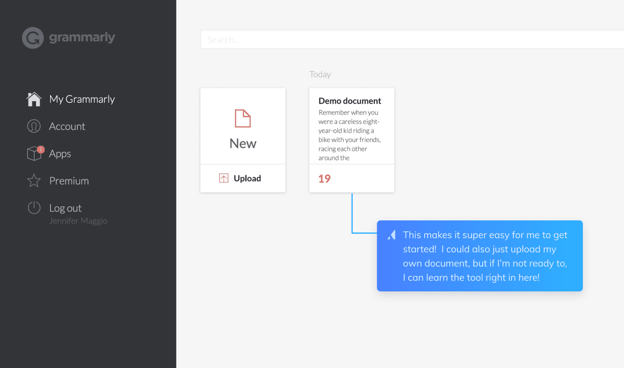
Image: Source
5. Use onboarding videos to increase user engagement
User onboarding videos are an outstanding tool for demonstrating your product and getting the users excited about it. In most cases, users prefer to watch videos as they explain complicated concepts easily and show products in action without letting the users lose interest.
6. Set clear expectations and show user progress
Using indicators such as a progress bar or a completion percentage is helpful as they keep the users motivated throughout the entire flow.
When a user doesn’t know how long a certain process will take, he may find it tough to commit to seeing it through. However, if he knows that it will only take him five steps to complete the onboarding process, he will feel encouraged to do so, thanks to completion bias.
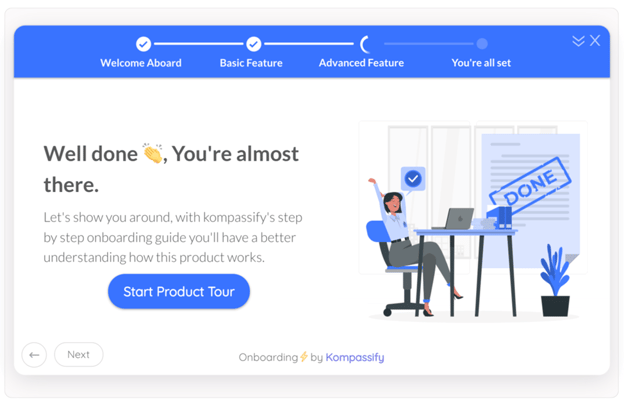
Image: Source
7. Collect and act on customer feedback
User feedback is the most crucial resource for every organization as it is the gold mine for users' insights.
As a best practice, make in-app surveys an indispensable aspect of your user onboarding process. You can then use this information to enhance the onboarding experience and ensure higher levels of customer success.
Conclusion
User onboarding is a continuous and active process of guiding new users to see value in your product and boost user engagement. The process seldom ends. As your product changes, your onboarding flow has to change with it to empower your users.
However, the onboarding process doesn’t have to be a daunting task. Begin with gaining deep knowledge about your users and their requirements, and then regularly evaluate if your onboarding is aiding them to get there.
The more you find out about your audience, the better you will get at enabling them to achieve the success they need to stay with your product.



